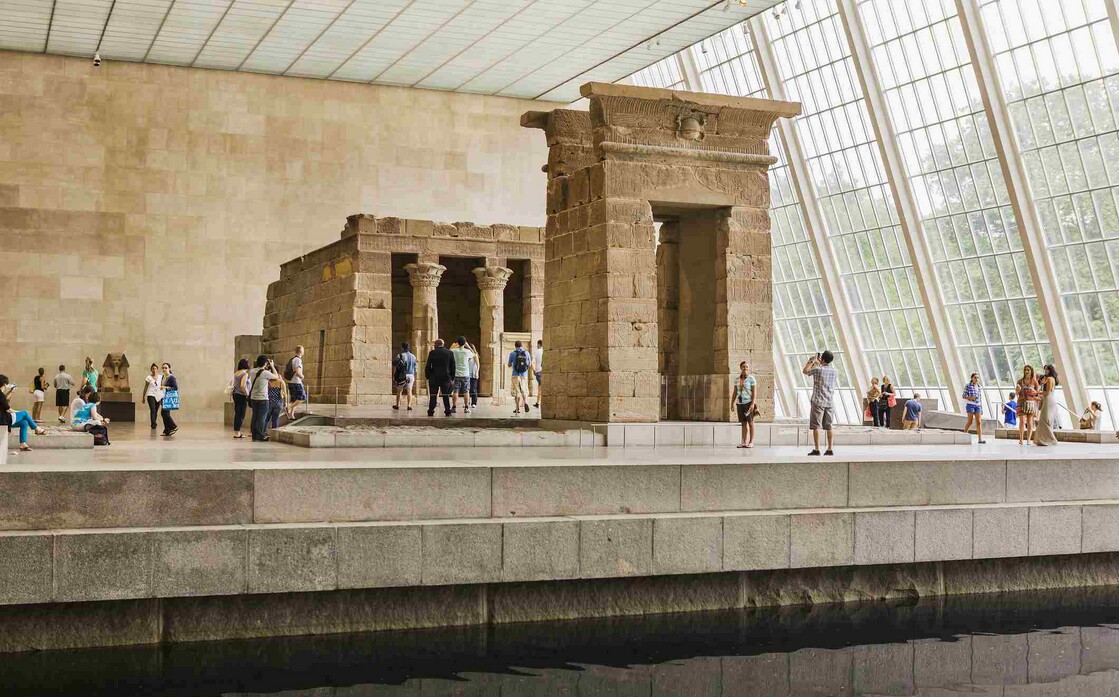I never lived in California, but I visited there many times on business trips and came to love it. Here are a few things that stayed with me from those visits, arranged in no particular order. If I have some details wrong or backwards, apologies to my companions on those trips, who became my friends. Writing this, I couldn’t remember a lot of detail about the actual work we did as a team, and didn’t try. But I remember very well the good times we had on side trips sightseeing and exploring California—or just hanging out—when we were not working.
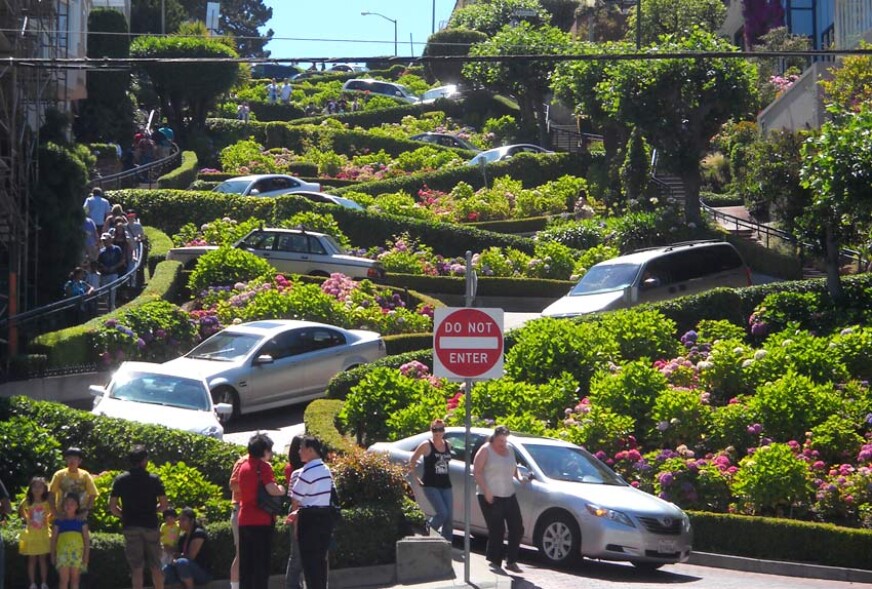
Most of my California trips were to San Francisco, Santa Clara or other towns in “Silicon Valley”, the hub of America’s high-tech computer business. On a different trip I got to visit Los Angeles, but only for a three-hour layover between planes. I was alone on that trip and took a walk from the terminal building down to the bottom of the main road in, where I sat on a low wall to catch some sun. Sitting there alone, I felt as if every person who turned onto the airport road that day was checking me out. That’s no credit to me – in California everyone is checking everyone else out all day long. It is the land of opportunity.
Job interview
My first California trip was for a job interview. After working for Continental Insurance/Insco for a few years, I was looking for a change. I saw an ad for VM programmers at the Amdahl Corporation in Sunnyvale, another Silicon Valley town. Amdahl was the new kid on the block then, making full-size mainframe computers and giving IBM a run for its money. I sent them a resume, we had a short interview over the phone, and before I knew it I was on a plane headed west.
The San Jose airport was so small that the entire rental car fleet sat right outside the terminal door. Japanese cars were just becoming popular, and the one I rented was the first I ever drove. I spent the evening getting a feel for California —just driving around the hilly green countryside, no other cars in sight. I forget what make it was, but it was peppy and fun to drive, and I gave it some exercise.
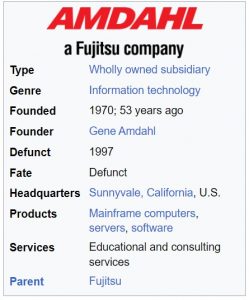
The next morning I drove to Sunnyvale for my interview. First I met with the personnel manager and we had a nice, friendly conversation, mostly about California, its hot housing market, and our families. He seemed to be a happy person, but at one point surprised me by dropping “You’ll find that most people in California are very shallow” into the conversation.
Next I met with a pair of technical managers and told them about all the cool software modifications and tools I’d designed and added to Continental’s VM operating system. Unfortunately I got caught up in trying to show that I wasn’t just the usual inward-focused bit-jockey systems programmer, but also a team player and leader. I shot myself in the foot by injecting the words “we” and “my team” into the conversation too often. Free advice to job seekers everywhere: don’t be modest. I didn’t take enough credit for my own work that day, and I didn’t get the job.
Housing boom
On a different trip, I shared a taxi with a gent from back East who was headed to the same hotel. We were talking about the booming real estate market, and I mentioned a newspaper story that said many Californians were stretching to carry mortgages on second or even third houses, counting on big future profits. We were still shaking our heads over the madness of this when our driver, silent until then, said “I’ve got six.”
The project
For a while, Continental had a sort of flirtation with several computer companies to decide which could best replace the aging workstations in its 40 branch offices. Our team would test and evaluate proposed replacements.
I sometimes had my doubts about whether the project to find a replacement branch office machine was on the level. Our management was very conservative about choosing computers and computer gear, seeming to honor the adage “Nobody ever got fired for buying IBM” —meaning, if you chose IBM and it somehow didn’t work out, it was still a reasonable choice because IBM was the world standard. Any fault would be IBM’s, not yours.
IBM didn’t yet offer a suitable small machine, so maybe our management was stalling in hopes they would have one soon, solving the problem for everyone.
The team
Our first team trip will be to Convergent Technologies in Santa Clara. We’ll be testing their latest minicomputer. In a few weeks, we’ll do the same thing at Hewlett Packard.
There are four of us on the team, representing four different Continental departments. We don’t know each other yet. As team leader, I get to drive the rental and am generally deferred to. When our plane lands in California, it’s a sunny, pleasant day. Once we’re out of the airport and on our way to the hotel, I ask “Would it be a good idea to open the windows?” There is a happy chorus of YES PLEASE!
In the Castro
We have a free day before testing begins and decide to go to San Francisco. Looking for a place to have dinner, we wander into a busy neighborhood and get in line outside a restaurant that seems popular. We are three men and a young woman only two years out of college. She is pretty and sweet and smart, and by the end of the day each of the men is half in love with her.
A sign tells us we’re in the Castro District. She says “Oh, the Castro District! That’s the gay section!” Many of the people in line with us or passing by appear to be of the rainbow persuasion, some very much so. In an excited whisper, she asks “Do you think we’ll see any gay people?”
At Convergent Technologies
The Convergent people have set up a row of their workstation computers for us in one corner of their factory floor and we get started. Our hosts make us think of the Avis “We try harder” slogan – they are desperate for our business and it shows, sometimes to the point of being embarrassing. Spotting my half-empty cigarette pack on the table, one of them offers to go buy me another.
Convergent has a cafeteria, but a Mexican food truck visits our side of the factory several times a day and we come to favor the exotic food off the truck.
None of us has ever seen the Pacific Ocean, and one day after work we take a drive west to the nearest beach.
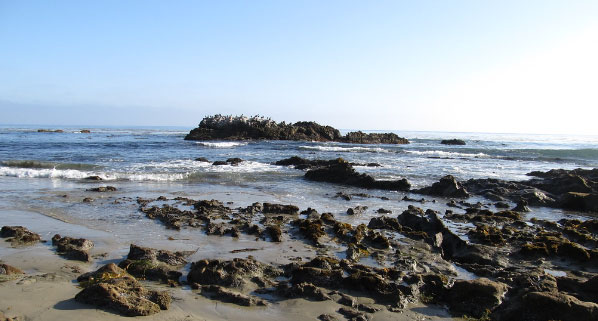
The beach is wild and rocky, not at all like the friendly, flat beaches back home in New Jersey. No one will ever play in the surf here, or lie on a towel to work on their tan.
We roll up our pants legs, stow shoes and socks in the car, and walk into the chilly water. The ocean here is calm, with flattish boulders washed over by low, polite waves. As the tide goes out, tiny crabs and other marine life are stranded for a while in shallow pools on top of the boulders. If you put your hand into one it feels alive, and the salt water hot from the afternoon sun.
Free weekend
We’ll be testing at Convergent for two weeks, which gives us a weekend in between for sightseeing. Driving out of the city, we cross the Golden Gate Bridge and continue north. We are like children, staring and pointing at things not to be seen in New Jersey. We drive into a touristy redwood forest, where we sit together on the colossal stump of a thousand-year-old redwood as we eat lunch and marvel at our surroundings. We follow signs that lead us to a winery tour, then wear out our welcome at its sampling bar. On our way back we shout out in unison a town name we see on a highway sign, “SNAVELY!”
Lombard Street
Another day we take our rental for a ride down San Francisco’s Lombard Street, known as “The Crookedest Street in the World”. Lombard Street got that way in the 1920s, when the city installed eight hairpin curves to reduce its dangerously steep downhill grade. Over the following years, taking a slow ride down Lombard Street became a favorite tourist thing to do, with the street eventually becoming so congested it created a quality-of-life issue for its homeowners.
When Lombard Street is not too crowded, it’s a fun, careful drive, offering scenic views of San Francisco Bay, Alcatraz, and the suspension bridges to Oakland. When we took that ride years ago, we enjoyed it so much we made our way back to the top and went again, drawing annoyed looks from a few homeowners who remembered us from our earlier pass.
On the fault line
A few weeks after finishing up at Convergent Technologies and writing our report, we return to California to run the same tests at Hewlett Packard in Palo Alto, a town halfway between San Jose and San Francisco.
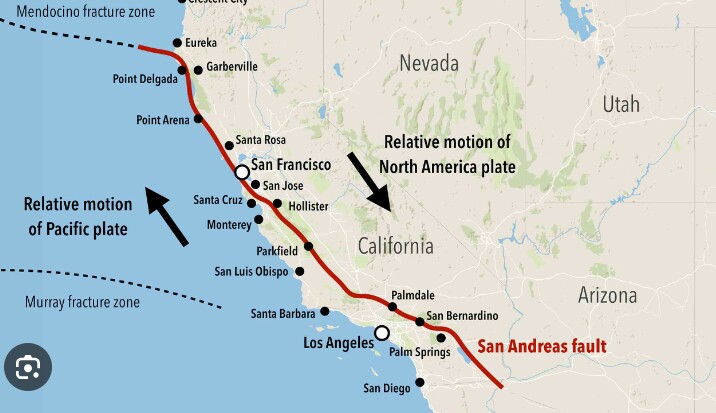
Hewlett Packard wants visitors to be aware its buildings in Palo Alto are on the San Andreas fault, the earthquake-prone sliding boundary between two of the Earth’s major tectonic plates. Hewlett takes earthquakes seriously and thinks visitors should too. Their buildings are low and stubby, and thus less likely to fall over. They are laid out around a central open quad with enough space for all employees to gather safely during a quake. If there’s not enough warning to get out into the quad, the next best thing is to crawl under a desk or other furniture. If that’s not possible, stand in one of the reinforced doorways.
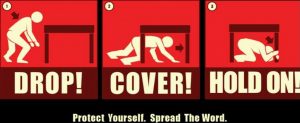
I won’t detail the testing we did in the two weeks we were at Hewlett Packard because it wasn’t much different from what we did at Convergent. Nor will I detail any of the side trips or other fun we may have had outside work hours while at Hewlett. To any of my former management who might happen to have lived long enough to read this, rest assured that we all worked very hard and didn’t have anywhere near as much fun as it sounds.
What’s next for California?
I’m disgusted by the way California has gone downhill. The city I’m most familiar with, beautiful and livable San Francisco, is now often referred to as a third-world shithole. After following the news over recent years, I have to agree, and California is off the list of places I might ever want to live. Collectively, California’s problems seem unsolvable.
Smash-and-grab looting, consequence-free shoplifting, acts of violence against strangers (the knockout game). Release without bail of criminals with lengthy arrest records. Providing free drugs to addicts instead of forcing them into treatment. The criminal class has taken over, and the rule of law has ended.
Add uncontrolled wildfires, the end of standardized testing, the leftward tilt of the education system, the general failure of the schools to educate. I could go on and on.
I guess there’s always hope that something or someone will come along to fix California. Short of martial law or outright civil war, I don’t know what that might be. But I’m glad I got to enjoy California a bit before its destruction.
